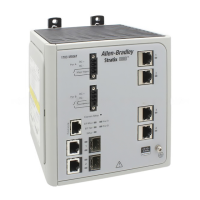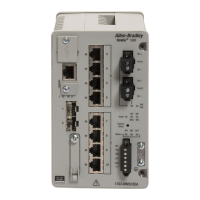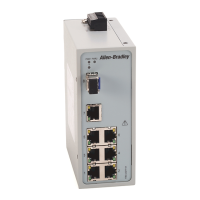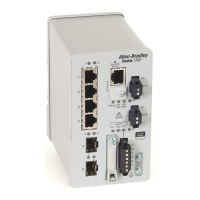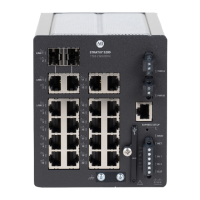Rockwell Automation Publication 1783-UM003G-EN-P - December 2012 49
Switch Software Features Chapter 2
Static Routing
Static routing is implemented both on the Stratix 8000 and Stratix 8300 switches.
Static routing is a Layer 3 (IP) protocol that lets the user to manually define
routes between Layer 3 devices (routers and switches). When static routing is
enabled, connected routing is enabled by default, which lets all devices on any
VLANs that use the switch communicate with each other if they use the switch as
their default gateway. Access control lists (ACLs) should be used where inter-
VLAN communication across all VLANs is unwanted.
On the Stratix 8000 switch, static routing can be enabled by using the CLI. To
enable routing, the SDM template must be changed to the lanbase-routing
template for the feature to become available.
On the Stratix 8300 switch, you can configure static VLAN routing for the
Stratix 8300 switch by using the Device Manager Web interface. For more
complex routing, use the command-line interface. See the following manuals:
• For more information on these features and how to modify them, see the
Cisco IE3000 Switch Software Configuration Manual, available from
http://www.Cisco.com
.
• For information on using the command-line interface for more complex
routing, see the Cisco IE3000 Switch Command-Line Interface Manual,
available from http://www.Cisco.com
.
Multicast routing In multicast routing, routers create optimal distribution paths for data sent to a multicast destination
address spanning tree in real-time. Multicast routing protocols supported are PIM (SM, SM, SDM),
DVMRP tunneling.
Redundant routing Redundant routing localizes the effects of route failures, and reduces control traffic overhead and
route reconfiguration time by providing a redundant network path. Redundant routing protocols
supported are HSRP (Hot Standby Router Protocol) and CEF (Cisco Express Forwarding).
IPv6 routing IPv6 network segments, also known as links or subnets, are connected by IPv6 routers, which are
devices that pass IPv6 packets from one network segment to another. EIGRP is the supported
protocol.
VRF Lite Virtual Routing and Forwarding (VRF) lets multiple instances of a routing table to coexist within the
same router at the same time. Because the routing instances are independent, the same or
overlapping IP addresses can be used without conflicting with each other. The simplest form of VRF
implementation is VRF Lite. In this implementation, each router within the network participates in
the virtual routing environment in a peer-based fashion.
Routing
Feature Description
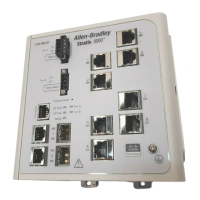
